Sigma may just be the bravest camera/lens maker in the market today. When they initially launched their new Global Vision (which spawned the ART series as one of the three branches of lens design), they began to tackle the established brands optically, but with familiar focal lengths (the 35mm f/1.4 was the first). At first they showed their daring by building big, heavy lenses that eschewed compactness in favor of optical excellence and high resolution. That daring was rewarded by first a rabid following of amateur photographers who found a high-quality option in their price range, and, in time, by a growing market acceptance even among professionals. As time passed, however, Sigma became even more daring by tackling projects that no one else would touch. This typically included focal lengths or zoom ranges at larger maximum apertures than what had been done before. The most recent example is this lens – the Sigma 105mm f/1.4 DG HSM ART. This focal length and maximum aperture has been done (by Nikon last year in the Nikkor 105mm f/1.4E), but Sigma has ratcheted things up further with a bigger, badder, bolder lens that looks more like a slightly smaller 200mm f/2 lens, tripod foot and all. The 105 ART will not be for everyone, but portrait photographers with some arm strength may have just found their new favorite tool!
Why a 105mm focal length? Part of the debate that many photographers will have is whether to choose an 85mm, 105mm, or 135mm focal length for portraits (Sigma now has portrait-focused lenses at each of these focal lengths). What is the best choice for you will ultimately be up to you and your unique shooting needs, but here are a few general thoughts.
- 85mm is the most flexible of the focal lengths. It is often a favorite of portrait photographers because it is easy to use and produces good results. It is easy to use in a studio because the angle of view is wide enough that you can frame even full body portraits at about 15 feet. It is narrow enough that it doesn’t exaggerate facial features like wider angle lenses. The downside is if you are shooting outdoors it provides the least amount of subject isolation, particularly if you are shooting full body portraits. Images will also look more “common” and less exotic or unique.
- 105mm strikes a great balance between the two focal lengths. It is still short enough to work in a studio for most things (save full body portraits) but gives more dramatic results (particularly when paired with this maximum aperture value) when shooting outdoors. Many portrait photographers would argue that this is a near-optimal focal length for human features. It is flattering because it doesn’t exaggerate any features (like wider angle lenses do) but neither does it compress them (like longer telephoto focal lengths do). It will give better subject isolation than an 85mm lens will at equivalent shooting distances and the overall “look” of images will be closer in many ways to the 135mm focal length than the 85mm focal length.
- 135mm is the most extreme of the common portrait focal lengths. Both its strengths and weaknesses are more pronounced. Longer telephoto focal lengths will compress features to the degree that people’s faces will be “flatter”, so the 135mm represents the upper limit before this really begins to happen. 135mm lenses offer the best maximum magnification figures and will often work with teleconverters. They offer the best subject isolation, and even a 135mm lens with a maximum aperture of f/2 will give a more shallow depth of field than the 105mm f/1.4. At 10 feet, the depth of field with the 105mm at f/1.4 will 2.79”; the 135mm f/2 will be 2.17”. At 30 feet the difference will be 2.09’ vs 1.63’. The difference will be slightly more pronounced with Sigma’s 135mm f/1.8 ART lens due to the slightly larger maximum aperture. 135mm lenses offer very unique and often dramatic portrait images (particularly full length environmental ones) only surpassed by the very extreme 200mm f/2 lenses. The major downside (and it’s a big one), is the 135mm focal length is the least flexible of the group. If you shoot in a studio, the 135mm focal length is mostly only good for waist up or head and shoulders. It will give you fewer framing options and the shallow depth of field is really too shallow at smaller working distances (at a working distance of 8 feet, for example, the depth of field is smaller than 2 inches, meaning that even getting both eyes in focus will require stopping the lens down.)
My own opinion is that I think the 105mm focal length strikes a great balance between the 85 and 135mm focal lengths, retaining some of the flexibility of the former while gaining some of the dramatic quality of the latter. I really liked it when using it for portrait sessions, and feel like if I owned both 105 and 135mm focal lengths, I would be likely to reach for the 105mm more often. Your mileage may vary, as the saying goes, but hopefully this will help some of you making a decision between several focal lengths.
The 105 ART is available in Canon EF (reviewed here), Nikon F, Sigma, and Sony FE mounts. If you are a Nikon shooter, the 105mm f/1.4E might be a good choice for you (particularly if you favor smaller size and don’t mind spending more money). Canon and Sony shooters really have no equivalent to this lens.
Check me out on Google+: | Facebook: | Twitter: | Flickr: | 500px: | Sign Up for My Newsletter :
Prefer to watch your reviews? My video review is loaded with sample images and footage to help give you the details.
Sigma 105 ART Build, Design, and Features
My first reaction to this lens was a chuckle over the size of the box, and then an exclamation of surprise over the size of the padded case containing the lens inside. “Oh my!”
Oh my, indeed.
This is a BIG chunk of lens. The Nikkor lens weighs 985g; the 105 ART weighs 1645g (58oz)! This a more than 3 ½ pound chunk of prime lens. You knew it was going to be a beast when you realize that of all the very large, very heavy prime lenses in the ART series, this was the first that Sigma decided needed a tripod collar. In fact, if you broaden your scope to include the zoom lenses in the series, this is only the second lens to have one (the 50-100mm f/1.8 ART also has one). Unlike the 50-100 ART, fortunately, this tripod collar is fully removable if you want to save a little weight and are going to primarily use the lens handheld. If you do put it on a tripod, however, using the collar is a good idea as you will probably have any issue with balance due to the lens mushrooming to a massive 105mm front filter thread – the same size as Sigma’s 150-600mm Sport lens!
This video will give you an in-depth, hands-on look at the build and design of the 105 ART:
As I mentioned, the 105 ART most reminds me of a compact(ish) Canon 200mm f/2 in its general profile. It is the huge flare to the front element that most catches your eye. While the 200L is 3 inches longer (79mm), it is actually only a half inch larger in diameter. Both lenses have appearance of being somewhat squat and front heavy due to the extreme nature of their front element. The physical dimensions of the Sigma 105 ART are 4.56” (115mm) in diameter by 5.18” (131.5mm) in length. This definitely dwarfs the Nikkor 105mm f/1.4E, which is 3.72” (94.5mm) in diameter by 4.17” (106mm) in length. The Nikkor sports a much more common 82mm front filter thread.
There’s no question that the size and weight of this lens are going to be the most daunting aspects of this lens for many photographers. I had one viewer comment (rather obviously) that, “This lens is no good for general purpose or travel…” Ummm, no it is not, but that’s certainly NOT what Sigma designed it for. This is a specialty tool for portrait and/or event (wedding) photographers, the kind of the lens that you have to be intentional about using because of the special results that it provides. No, this lens is not going to be for everyone, but I suspect the target demographic is going to be willing to forgive the size and weight because of the optical performance.
The lens is actually very nicely built, and, in a very positive twist, the degree of weather sealing is actually up to the standard of Sigma’s Sport line, which is to say much more robust. While Sigma has started to add some weather sealing to the ART series in more recent releases, it has typically been limited to including a rubber gasket at the lens mount. That’s certainly not the case here, as Sigma says this, “Like SIGMA’s Sports line lenses, the 105mm F1.4 DG HSM | Art features a highly effective dust- and splash-proof structure with special sealing at the mount connection (with exception of the Sigma mount), manual focus ring, cover connection, and other areas, allowing photographers to work in all types of weather. In addition, the front of the lens is protected by a water- and oil-repellent coating that makes cleaning easy.” That’s certainly much more encouraging language, and reflects the fact that Sigma has treated this lens very seriously – like a tool for professionals, which is what it needs to be!
Another interesting departure is when it comes to the lens hood, which is not a typical bayonet-style. It is made out of a material called “carbon fiber reinforced plastic” (CFRP), a material often used in the aircraft industry because of its combination of strength and light weight. It employs a knob that activates an internal clamp that tightens it down. Another thoughtful touch here is a recognition of the size/shape of the lens and that the most stable position to set it in will often be face-down. The portion of the lens hood that would come in contact with the surface of whatever the lens would be set on has a rubberized, soft touch material that will prevent damage to either the lens or the surface it is set on.
I also want to praise Sigma for delivering an excellent design on the tripod collar. It is made of good materials, is fully (and easily) removable, and the foot is Arca-Swiss compatible, which means that you can easily clamp it onto most tripods without the need for a quick-release plate. It’s a much better design than the one found on the 50-100mm f/1.8 ART, which I found more of a nuisance than anything.
I mentioned the very large front filter thread (105mm), which fortunately does have a practical purpose. Sigma’s press release states that the purpose of the large 105mm filter diameter is that the 105 ART, “…delivers a significantly greater volume of peripheral light than other lenses in its class. Minimizing vignette while offering a beautiful bokeh effect, this lens is ideal for portrait photography.” While it is true that the level of vignette is lower than most medium telephoto lenses, there is a significant downside to this approach. The first is that many portrait photographers don’t actually mind some natural vignette on short and medium telephoto lenses (within reason). It is often flattering to the general look of portraits, and, if undesired, is pretty easy to correct either in post or in JPEGs by enabling Canon’s “Peripheral Illumination Correction” (which is supported in this lens).
The bigger concern is that many portrait photographers will employ neutral density (ND) filters to allow them to shoot outside with wide apertures (f/1.4 is a lot of light-gathering potential, which means when shooting outside it isn’t difficult to hit the maximum shutter speed limit of your camera). They will use the same technique to match sync speeds to their strobes/flash units, which is typically capped at no higher than 1/250th second. Often something like an ND 0.9 filter is required to get shutter speeds down to that level. A quick search of B&H Photo reveals that 1) selection is much more limited in filters that large and 2) the filters are fairly expensive. Most of them are $150+, which means that if you want a few filters, the price of your lens is going way up. I think I would personally employ HSS (High Speed Sync) with this lens (which I have done for most of the portraits shown in this review) instead of going for expensive filters, but there would be situations in brighter sunlight where you would be forced to stop the lens down to smaller apertures to accommodate the light without having a circular polarizer or neutral density filter. One final consideration is that the sheer size of 105mm filters makes them a little more unwieldy for packing and bringing along.
I know from feedback from my audience that this is a real concern for a number of potential buyers, and it was obviously a calculated risk by Sigma. It will alienate some photographers, but primarily those whose workflow centers around the use of filters. I personally utilize other techniques to solve the same problems, so it impacts me less.
A moment ago I mentioned that this lens IS supported by Canon’s Lens Aberration Corrections in camera, which is a huge recent development for Sigma. Prior to the release of the 14-24mm f/2.8 ART lens no third party lenses were supported by Canon’s in camera corrections, which was a baked-in advantage for first party (Canon) lenses. Somehow Sigma has gotten access to this (most likely through some kind of internal agreement with Canon), which now extends this advantage to Sigma (other third party lenses that I’ve reviewed in this same time period are NOT supported). The 105 ART is the third Sigma lens in the past few months that I’ve reviewed that has been supported, and it is a significant advantage for these lenses. What this means is that all of your JPEGs are fully corrected in camera for things like vignette, chromatic aberrations, and distortion (if you enable these corrections). In this case, the lens actually has relatively few issues in any of these areas, but, as these RAW/JPEG comparisons show, it does enable to get great looking JPEGs right out of camera. This is particularly helpful for the times you A) need to quickly get images to clients without an opportunity for editing or B) want to show images to clients. I like to shoot with RAWs recorded to one card and JPEGs to another for this purpose.
Sigma’s new access to this allows their lenses to compete on a level playing field with Canon lenses in the Canon space, and gives them an advantage over other third party lenses for now. Sony is not restrictive on third party lenses, so the FE mount will have similar Sony support…but that’s not unique or unusual. For Canon shooters, however, this is a big deal. Here’s a look at both a RAW file and then the corrected JPEG that comes out of the camera:
This lens is also compatible with Sigma’s services like mount conversion (if you change camera systems you can have the mount changed on your lens…for a price). It is compatible with Sigma’s USB dock (firmware updates, focus tweaks, etc…) and also with Sigma’s MC-11 adapter (which allows Canon EF and Sigma mount lenses to be used on Sony E-mount).
What it’s not compatible with, unfortunately, is teleconverters. I had the bright idea (as did some of my viewers) of how nice a 147mm f/2 lens might be (or a 210mm f/2.8, for that matter, though that is less unique). I tried to mount my Canon 1.4x III, but it just won’t physically work. I don’t own any of the Sigma teleconverters, but I did note that Sigma’s list of features of the lens did not include compatibility with them, and when lenses are compatible they are always quick to point that out. The closest you will get to this is with cameras that allow you to shoot in a crop mode, though that isn’t really the same thing.
One other area where this lens lags in comparison to 135mm options is when it comes maximum magnification/reproduction. The lens has only a moderately close minimum focus distance of 39.4” or one meter. As a result, the magnification ratio is 1:8.3 or 0.12x. This is fairly typical for an 85mm lens (they are often around 0.13x), but 135mm lenses will often give you 0.20x or better (the Zeiss Milvus 2/135mm gives you a 0.25x magnification, which is very useful).
All things considered, however, this lens is beautifully built and highly functional. It has perhaps the most robust build of any of the ART series, and, while the general look is familiar, the materials are a grade higher. It is certainly the match of any first party lenses that it might compete with.
105 ART Autofocus
My experience with the last three Sigma lenses has been radically different than all of the previous Sigma ART series lenses I have reviewed. Autofocus has been so dialed in that I haven’t even had to calibrate the lenses on my 5D Mark IV but have just mounted them on the camera and used them. Interestingly, this has also coincided with Sigma having access to Canon’s Lens Aberration Correction (in camera correction of things like vignette and chromatic aberrations for JPEGs). This makes me wonder if Sigma has not entered into some kind of silent (as far as the public goes) agreement with Canon that gives them access not only to the Lens Aberration Correction (something no third-party lens maker had access to before) but also Canon’s focus algorithms. The Sigma 14-24mm f/2.8 ART and this 105 ART have behaved very much like first party lenses. The 70mm f/2.8 ART is a slightly different beast, with a different type of focus motor, and while I have also had excellent focus accuracy with it, I have noted that far fewer cross-point AF points are available with that lens.
As a part of my final video review, I did a segment where I examined the focus points I selected during a portrait session and then reviewed the final results at a pixel level to see how well focused they were. Remember that this was with a lens in which I did zero calibration; I used it right out of the box because early tests indicated the focus was reliable. What I found is that most all portraits were essentially perfectly focused regardless of the focus point I selected (which is fantastic progress for Sigma!!) There were a few that were acceptably focused (very slight front or back focus), but I also noted that those tended to be shots where I had used focus and recompose rather than putting a focus point right on the eye or face. I’ve used the Canon 135mm f/2L in a lot of similar sessions, and I feel (from experience) that I actually had better focus results with the Sigma than I did with the Canon…and that’s not a sentence I ever really felt I’d use! In all kinds of shooting situations I was exceptionally pleased with the focus accuracy of the 105 ART, which is a big part of why I felt so positively about the lens by the end of my review period. I can’t stress enough how important focus reliability is for an extreme instrument like this.
I spent an evening with friends who are breeders of Golden Retrievers out at their RV along the Ottawa River, and we did a session where the Retrievers, well, retrieved, while I tracked the action with the 105 ART. Focus accuracy continued to be very good in AF Servo mode despite my shooting at a very wide f/1.4 aperture. I found that focus speed was sufficient in most situations, though when the dogs were coming towards me and getting closer, focus wasn’t always fast enough to achieve a sufficient lock for me to take the photo. The photos looks great, though, with great subject isolation. Here’s a little gallery of them:
Some might consider this lens for sports use, and my best recommendation is perhaps to do a rental and see if the lens focuses fast enough for your particular sport. It’s a tempting option because it does let in such a great deal of light and provides nice subject isolation. It’s easy to keep your shutter speed up and your ISO low with it, but I’m not convinced the focus speed is quite fast enough to deal with the most critical action. Wedding and event photographers will find the focus speed and AF servo tracking to be plenty for their needs.
I found that the lens adapted easily to a Sony body via Sigma’s MC-11. While it is overpoweringly large on the smaller Sony mirrorless bodies, autofocus was quick and accurate and things like Eye AF seemed to work well. If you ignored the size of the lens (admittedly a little hard to do), it’s a nice fit on Sony.
The Sigma 105 ART is a lens with a specific mandate – to be an exceptional tool for portrait photographers. When used for its intended purpose, its focus system (at least on Canon), has been exceptional in my tests. I’ve never been happier with the focus results from a Sigma lens.
Sigma 105 ART Image Quality
This is what it all comes down to. The justification for such a large, heavy lens is the kind of image quality that it can provide. My coverage of image quality falls into two categories: 1) Resolution, where I cover sharpness and contrast and 2) Rendering, which looks at the global look of images in areas like color rendition, bokeh, flare resistance, chromatic aberration, etc… Some lenses are good in one metric but not the other. Case in point is a popular lens like the Canon EF 85mm f/1.2L II. It’s not incredibly sharp nor does it have exceptional levels of contrast (it suffers from some longitudinal chromatic aberrations), but it is beloved because of its rendering. We’ll see how the 105 ART deals with both of these areas.
The best way to see my findings on image quality is by watching this detailed video episode where I interactively break down the image quality of the 105 ART.
Resolution
I used one of the finest optical instruments in the world as a point of reference for this comparison – the Zeiss Milvus 135mm f/2. While they don’t share an identical focal length, they do serve a similar purpose (plus I own the Milvus and had it on hand). It should also be noted that the Milvus costs about $600 more. How does the 105 ART hold up to such illustrious competition?
Pretty well, actually.
With both lenses wide open (f/1.4 for Sigma, f/2 for Zeiss), the Sigma shows lower vignette (a stated aim and reason for the 105mm filter thread). Neither lens shows any measurable distortion. The Zeiss has slightly higher measures of contrast/microcontrast (always a Zeiss strength), though not by a wide margin. The center resolution is roughly similar, with Zeiss showing slightly higher resolution on the edges of the frame. It wouldn’t be enough to noticed in real world shooting.
With the 105 ART stopped down to f/2, the image across the frame is brighter with the corners notably brighter due to lower levels of vignette. The Zeiss still shows slightly higher microcontrast, though the heavier vignette masks that along the sides of the frame. Both lenses are nearly perfectly sharp across the frame. I would categorize the difference in vignette the most significant attribute on display.
The Milvus lens shows a near complete improvement of vignette when stopped down to f/2.8, and the f/2.8 image (with equal settings) now favors the Zeiss in total brightness. Both lenses are brilliantly sharp everywhere in the frame, but the microcontrast levels still favor the Zeiss (it’s an Apochromatic design, which means that chromatic aberrations are essentially nonexistent – which always boosts contrast.) I would say that the f/2.8 comparison favors the Zeiss, but not in a major way.
Stopping on down reveals little else in this comparison. Both lenses are perfectly sharp and deliver essentially equal levels of image quality.
The 105 ART certainly doubles as an exceptional landscape option. It delivers incredible amounts of detail, and makes me wish that I could have mounted it on a 50 MP 5DsR! Still, even on the 30 MP of my 5D Mark IV, there are fantastic amounts of detail everywhere you look. Here’s a handheld f/5.6 shot that shows what this lens is capable of. Look at the amazing detail in the crops from across the frame.
There’s no question that the Sigma 105mm f/1.4 ART is a very sharp lens. It delivers such high levels of sharpness and contrast that you can just choose an aperture value based on your depth of field needs. It will always be sharp. Here’s a wide open portrait along with a crop of the detail on the face.
Pretty awesome, I’d say. The Sigma 105 ART delivers in the resolution department.
Rendering
The Sigma ART series has always been strong in the resolution department, but I’ve levied an accusation in the past of images from some of the lenses looking a little “clinical” or “sterile”. This could be due to somewhat flat color, a lack of 3-dimensional depth, or uninspired bokeh rendering. I felt like the Sigma 135mm f/1.8 ART represented a new height for the series, however, with a generally excellent blend of resolution and overall “look” to the images (or rendering). I’m happy to say that the 105 ART continues in that fine tradition.
Let’s return to the comparison space for a moment. I tried to frame a portrait roughly similar between the Milvus lens and the 105 ART. I used an aperture of f/2 to further equalize the comparison. What I found was that I preferred the microcontrast and color slightly on the Milvus (the subject “popped” a little more), but I preferred the defocused region (bokeh) more from the Sigma (I found it both smoother and softer). Both the strength and weakness of the Milvus image is a by-product of the Apochromatic design.
When I stepped further away, I found similar results.
The strength of the Milvus as a portrait lens is great color rendition, microcontrast, and three-dimensional pop to images. The strength of the 105 ART is a great balance between sharpness and bokeh. I think the images look fantastic from it, and on a practical level, I had a lot more keepers from the Sigma due to having accurate autofocus (the Milvus is a manual focus only lens). While in an absolute sense I slightly favor the image quality from the Zeiss, the Sigma images are incredibly close and the Sigma is the more practical tool due to having excellent autofocus. I actually prefer to use my Milvus lens adapted to my Sony a7R3 due to gaining both image stabilization and a lot of manual focus aids to assure my images are properly focused.
Here are series of portrait images from the 105 ART:
Another asset to the impressive image quality from the 105 ART is the exceptionally low levels of chromatic aberrations (of either the longitudinal or lateral varieties). I’m very familiar with the scenes most likely to produce chromatic aberrations, but when I shot those scenes, I simply did not see real-world CA anywhere. Here are few of those scenarios along with crops that show where the CA would show up…but isn’t there.
The lens seemed to handle flare reasonably well. There is definitely some loss of contrast with the sun in the frame, but not in an overly destructive kind of way. That’s obviously a very big front entrance pupil, so I think that Sigma has done a fairly good job of taming flare. Using the lens hood is always wise, however, for a number of reasons. These two images show first wide open flare resistance followed by the lens stopped down to f/11.
As noted, the bokeh quality is beautiful. Expect there to be some geometric deformation of bokeh circles around the edges (cay-eye or lemon shapes) with the lens wide open, but if that is an issue for you, stopping down to f/2 or f/2.8 usually fixes that. Examining bokeh highlight circles close up reveals the usual Sigma look – a slightly busy interior, but not concentric rings along with a fairly soft inner line. This grass and water droplet image shows what I’m talking about.
I should note that while I didn’t test this lens for coma (I typically only do that with wide angle lenses), Sigma does tout low levels of coma on the lens and states that it is an excellent night sky image lens (which the bright maximum aperture and low vignette helps with as well).
All in all, the lens produces beautiful images. Here’s a few more general purpose shots to feast your eyes on:
You can find even more images in the Lens Image Gallery here. Looking at photos from a lens (particularly unedited ones like these) are a good way of getting a sense of what a lens is capable of.
Conclusion
Sigma has once again successfully created an extreme optical instrument. Tackling a project like a 105mm lens with a huge maximum aperture of f/1.4 is not for the faint of heart, and yet I see evidence of growing maturation as Sigma manages to get more and more right. There’s no question that the extreme size and weight of the 105 ART will be off-putting to many, but those with a little extra arm strength will be rewarded with an exceptional portrait lens. The Sigma 105mm f/1.4 DG HSM ART is not a mainstream lens. It isn’t a general-purpose lens; it is a tool for specialists. A lens like the 105 ART can seriously set your work apart from the crowd, providing images unique to those that a standard 70-200mm f/2.8 lens can produce. And for some photographers, that is worth the extra effort. Outside of the size/weight (and to lesser extent, the price), there is little to criticize about this lens. The autofocus works well, the images look fantastic, and the build level is high. I started off this review with little interest in adding the lens to my kit; I end it with a strong interest in acquisition. Put simply, the new Sigma 105mm f/1.4 ART is one of the best portrait lenses I’ve ever used. Now if only it was a little lighter…
Pros:
- High grade build with Sport level weather sealing
- Consistently accurate autofocus even using outer points
- Low vignette
- Nearly nonexistent chromatic aberrations
- Exceptional sharpness and contrast from f/1.4 on
- Bokeh quality is smooth and soft
- Good color rendition and general “look” of images
Cons:
- Exceptionally large and heavy
- Doesn’t accept teleconverters
- Low levels of magnification
- AF isn’t quite fast enough for demanding sports work
- 105mm filters are expensive and unwieldy.
Gear Used:
Sigma 105mm f/1.4 DG ART: B&H Photo | Amazon | Amazon Canada | Amazon UK | Amazon Germany | Ebay
Canon EOS 5D Mark IV (5D4): B&H Photo | Amazon.com | Amazon Canada | Amazon UK
Sony a7R III Camera: B&H Photo | Amazon | Amazon.ca | Amazon UK | Ebay
Peak Design Slide Lite: Peak Design Store | B&H Photo | Amazon | Amazon Canada | Amazon UK
BenQ SW271 4K Photo Editing Monitor – B&H Photo | Amazon | Amazon.ca | Amazon UK
Adobe Photoshop Creative Cloud 1-Year Subscription
Alien Skin Exposure X2 (Use Code “dustinabbott” to get 10% anything and everything)
Purchasing your gear through B&H and these links helps fund this website and keeps the articles coming. You can also make a donation here if you would like. Visit my Amazon page for some of my gear of choice! Thank you for your support.
Great News! I can now offer a 5% discount on all purchases at Amplis Foto, Canada’s Leading Photographic Supplier. Please enter discount code: AMPLIS52018DA in your cart. It is good for everything in your cart, and is stackable with other coupons, too! It will take 5% off your entire order! Proceeds go towards keeping this site going and providing you with new reviews!
Check me out on:
My Patreon: | Google+: | Facebook: | Twitter: | Flickr: | 500px: | Sign Up for My Newsletter :



Keywords: Sigma 105, Sigma 105 f1.4, Sigma 105mm f/1.4, Sigma 105mm f/1.4, Sigma 105 f1.4 Review, Sigma 105mm Review, Sigma, 105mm, f/1.4, 105 f1.4, Sigma 105mm 1.4 ART, ART, Dustin Abbott, Sigma 105mm 1.4 Review, Lens, Review, Comparison, Test, Autofocus accuracy, AF, Canon 5D Mark IV, Canon 5D4, Sony a7R3, Sony a7riii, Sigma MC-11, FE, Nikon D850, Video Test, Sample Images, Portrait


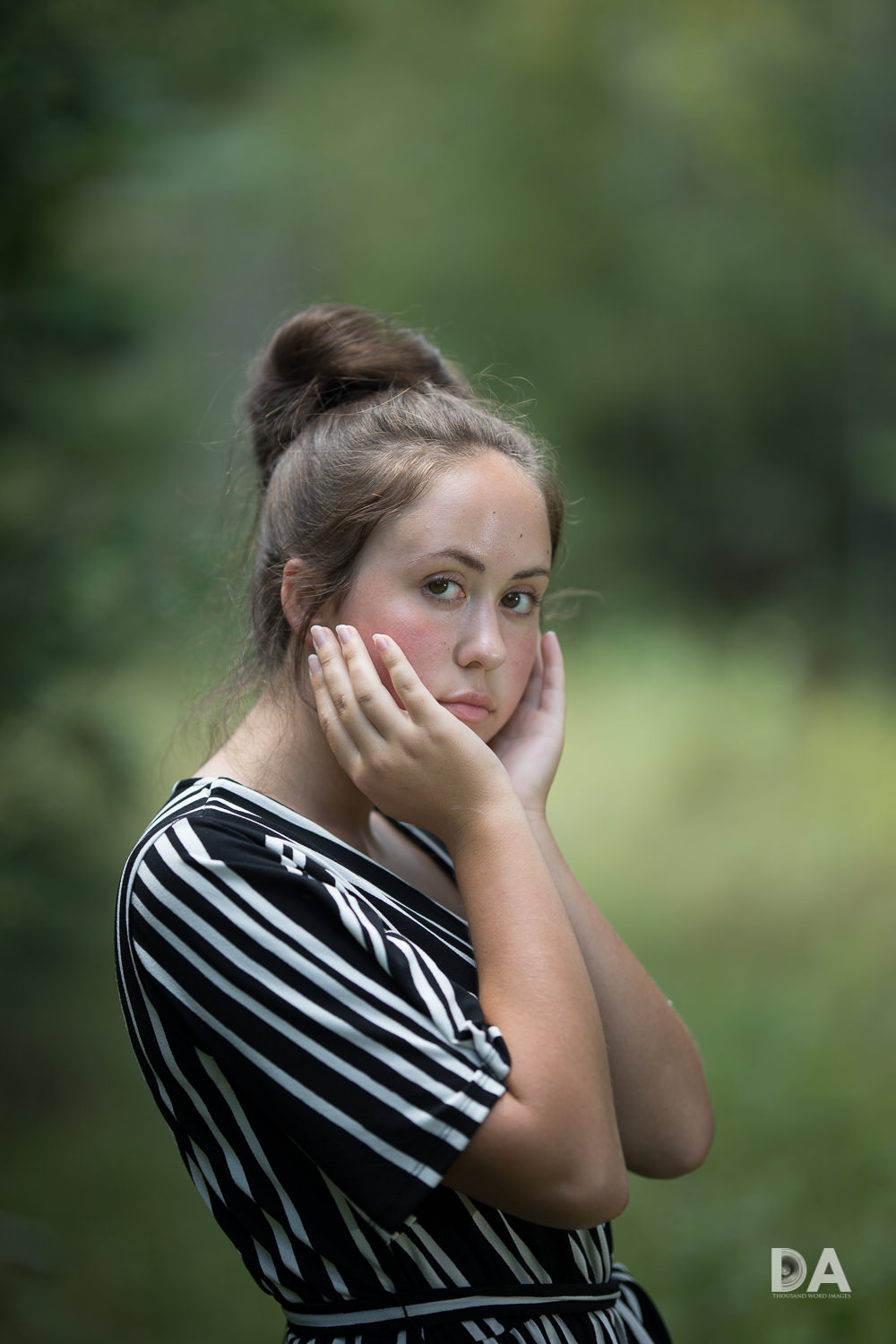
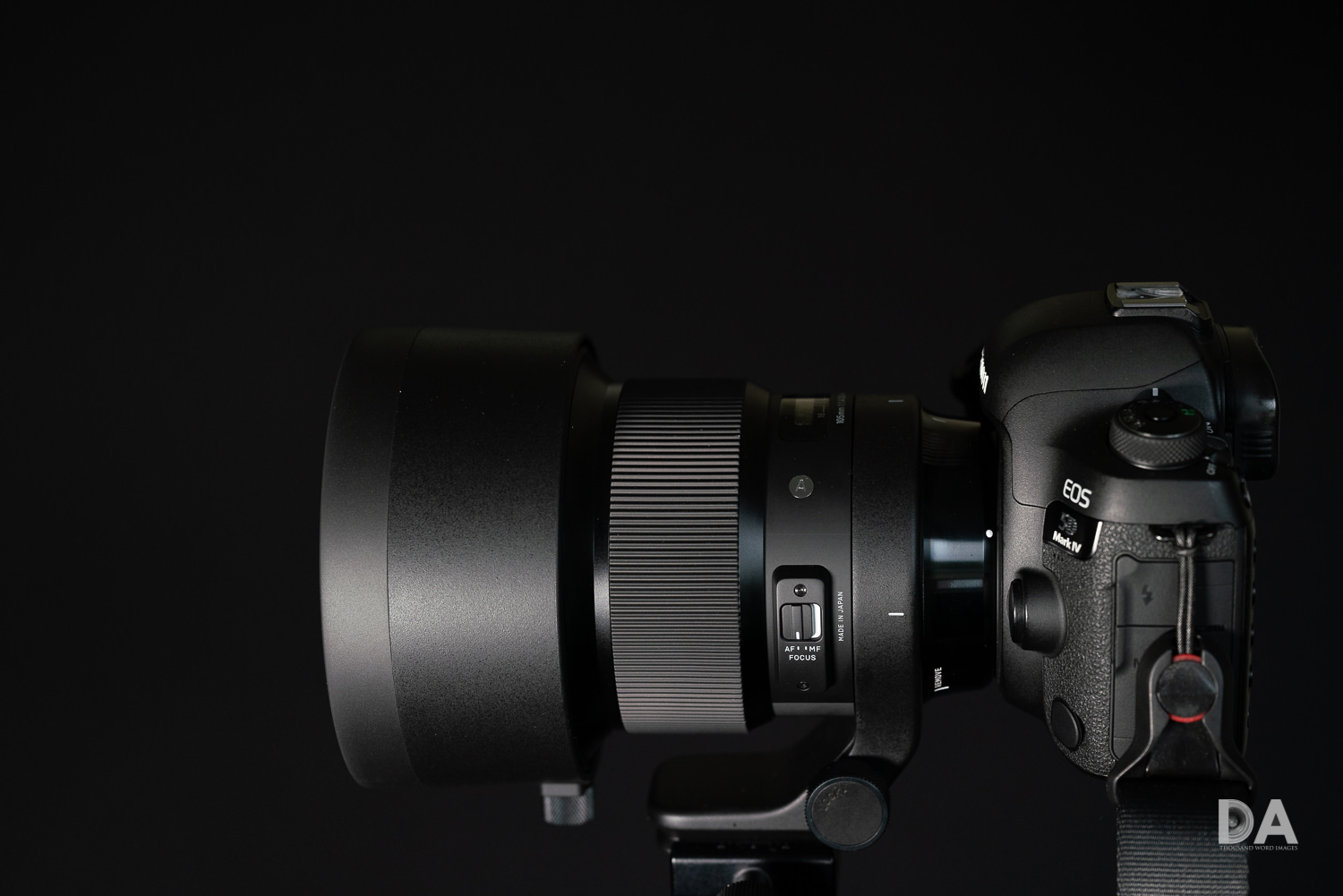
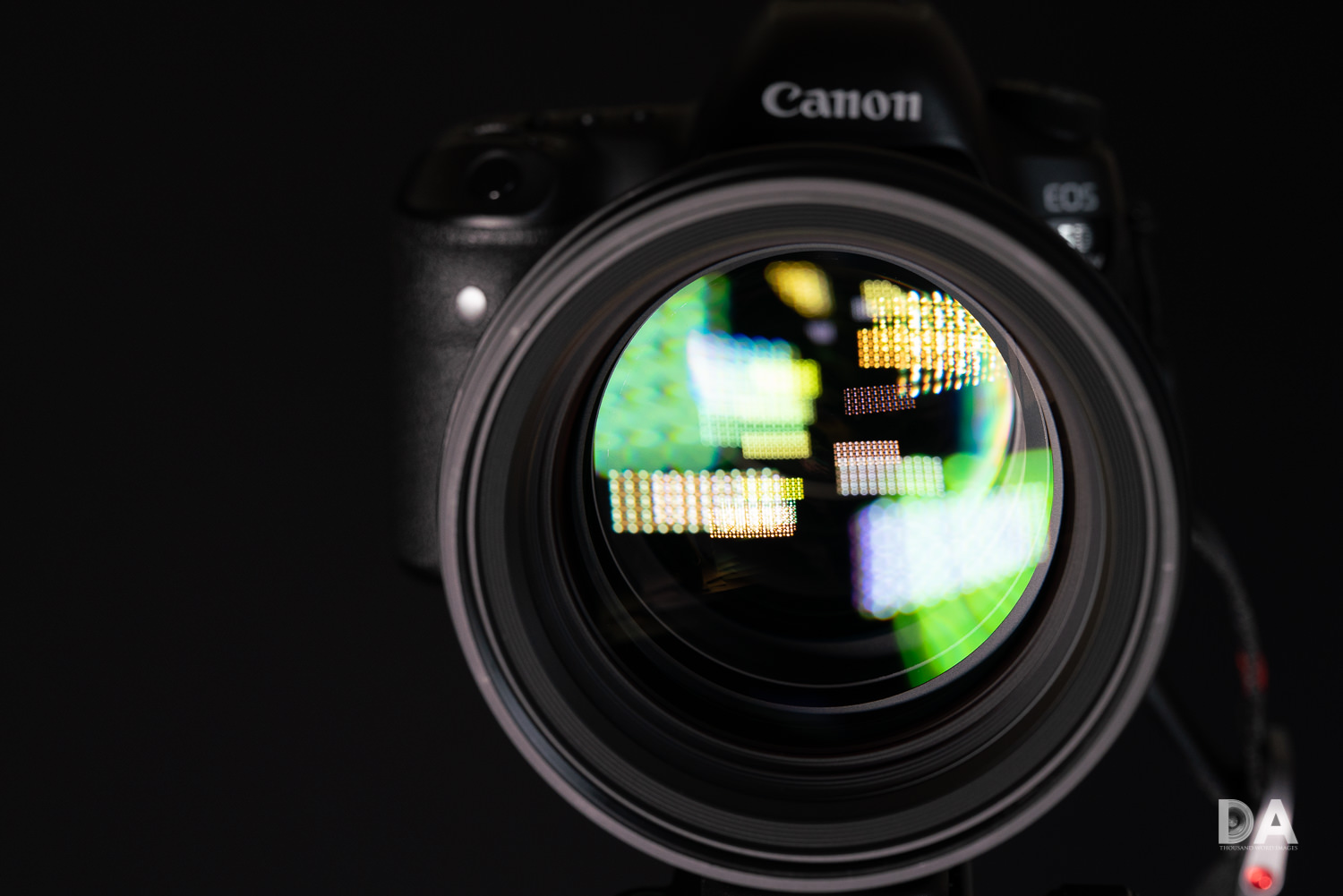
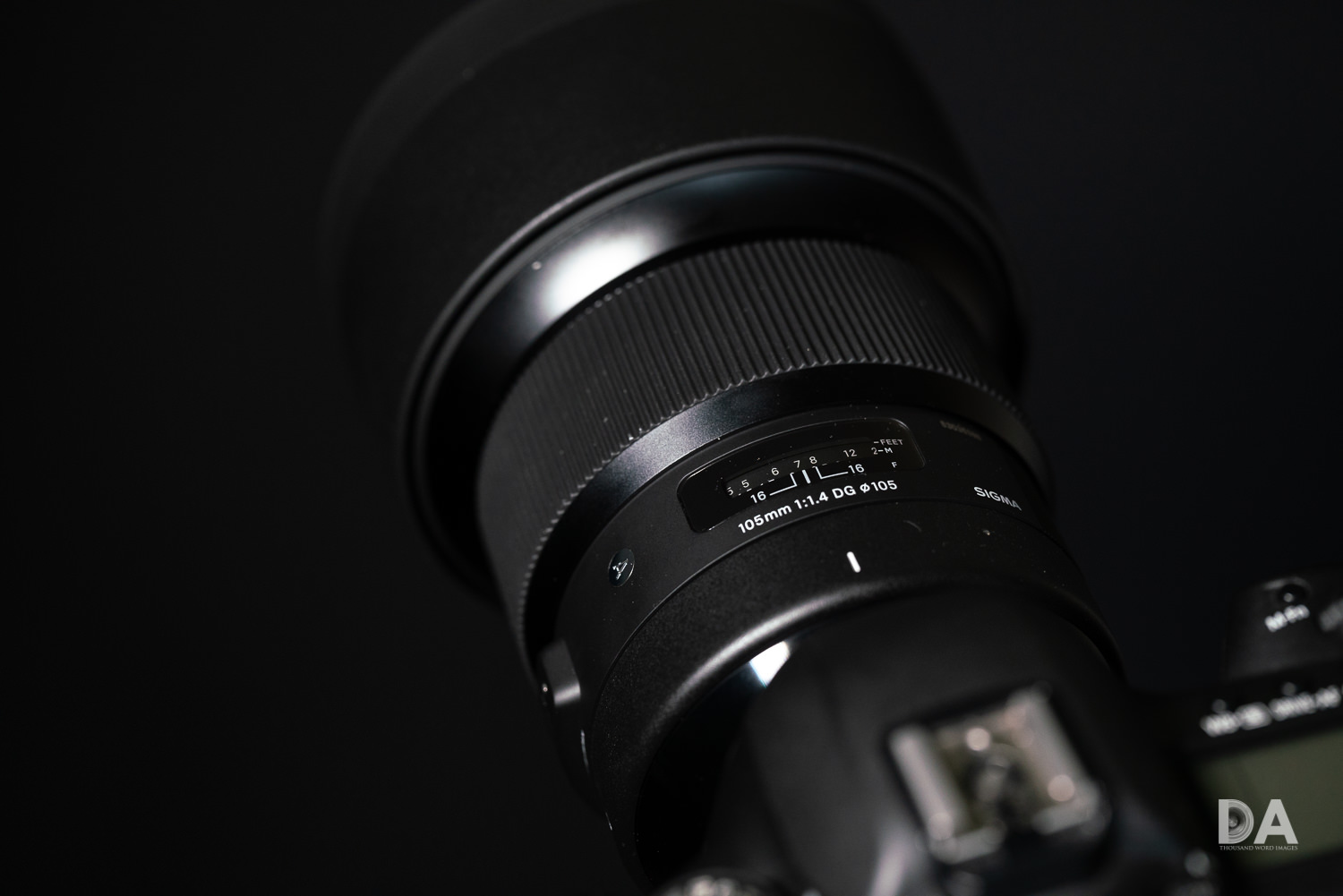
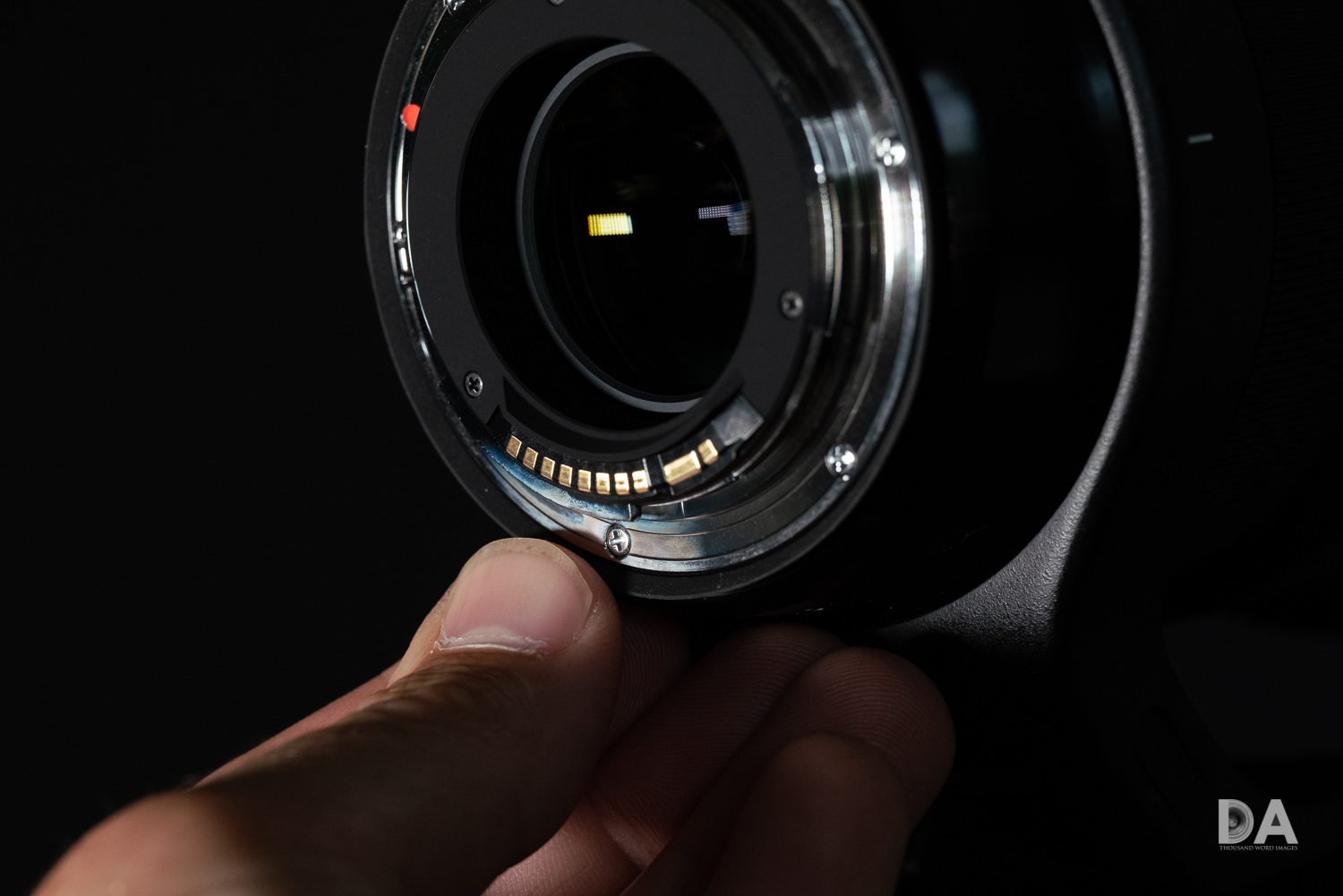
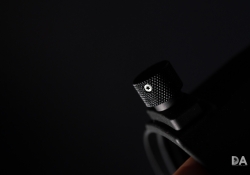
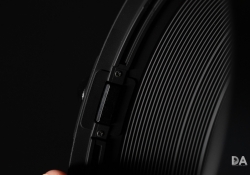
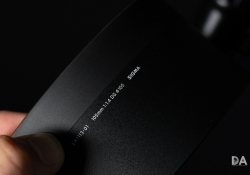
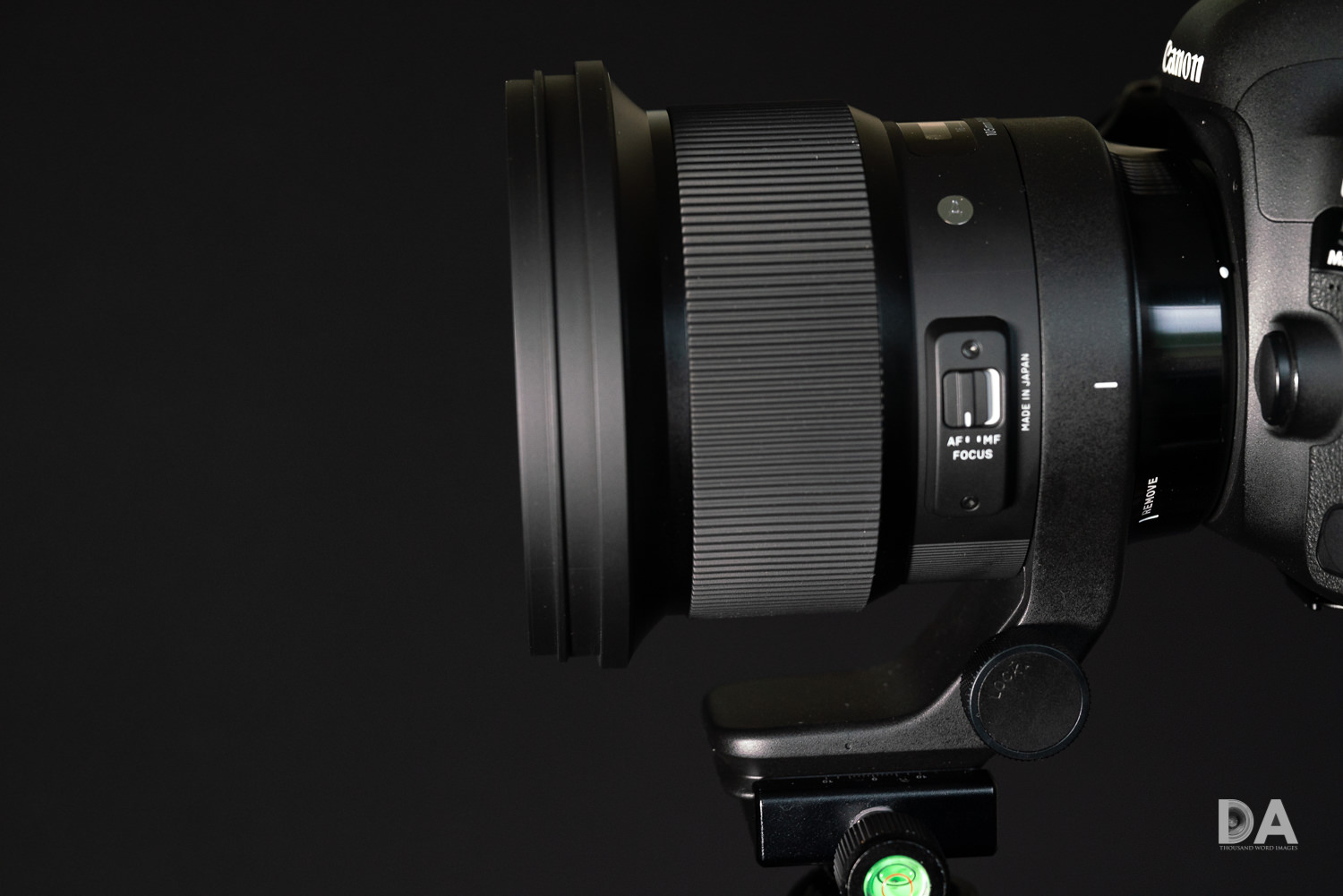
















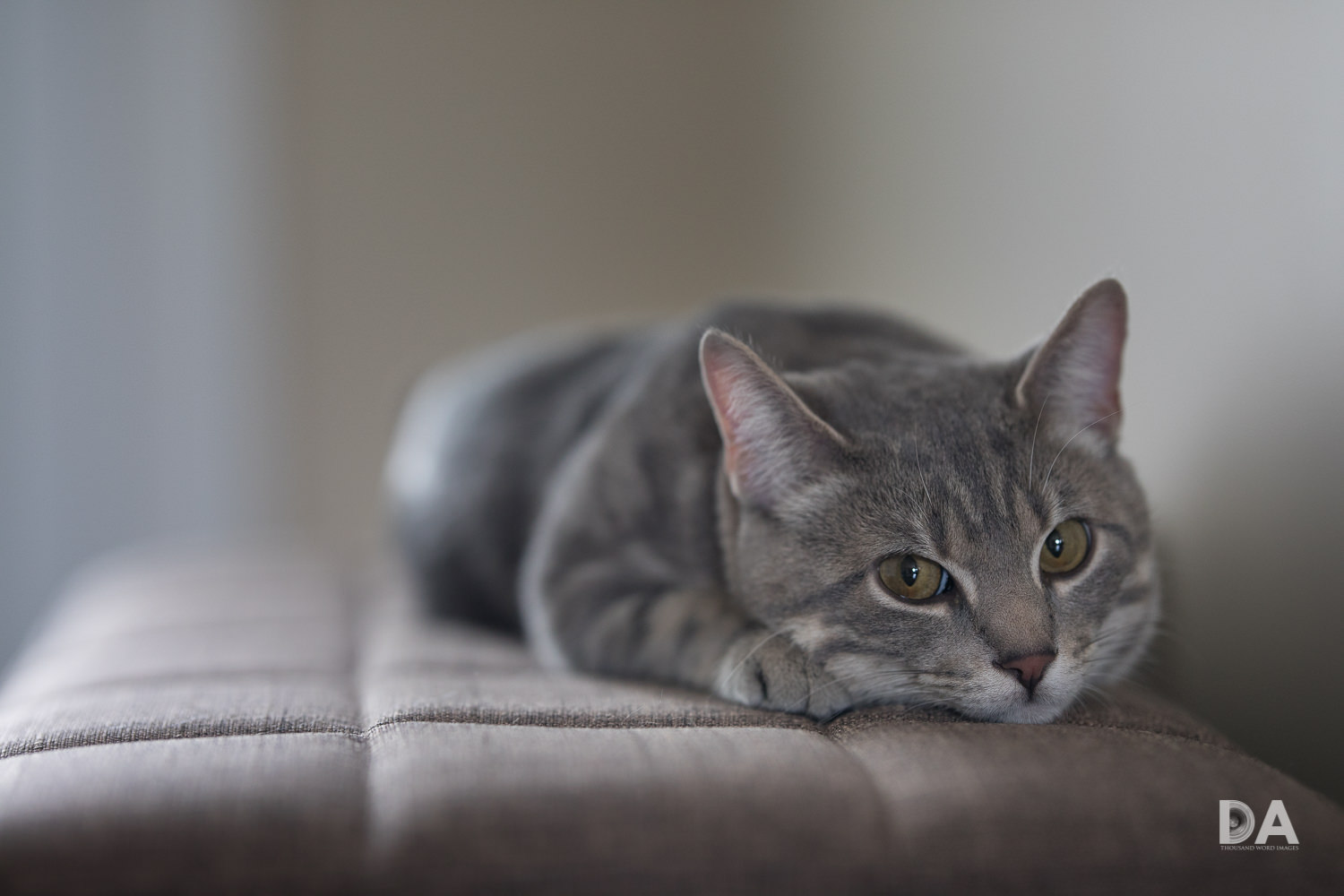
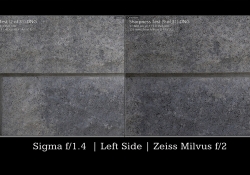
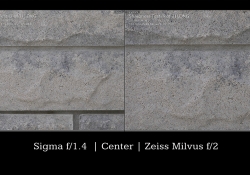
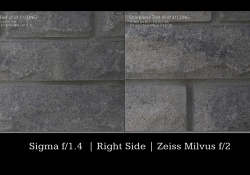
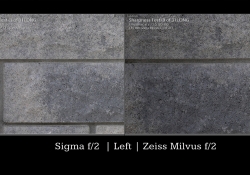
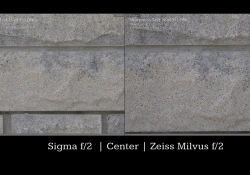
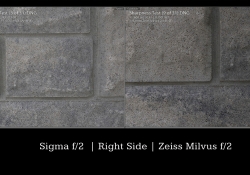


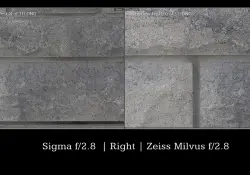
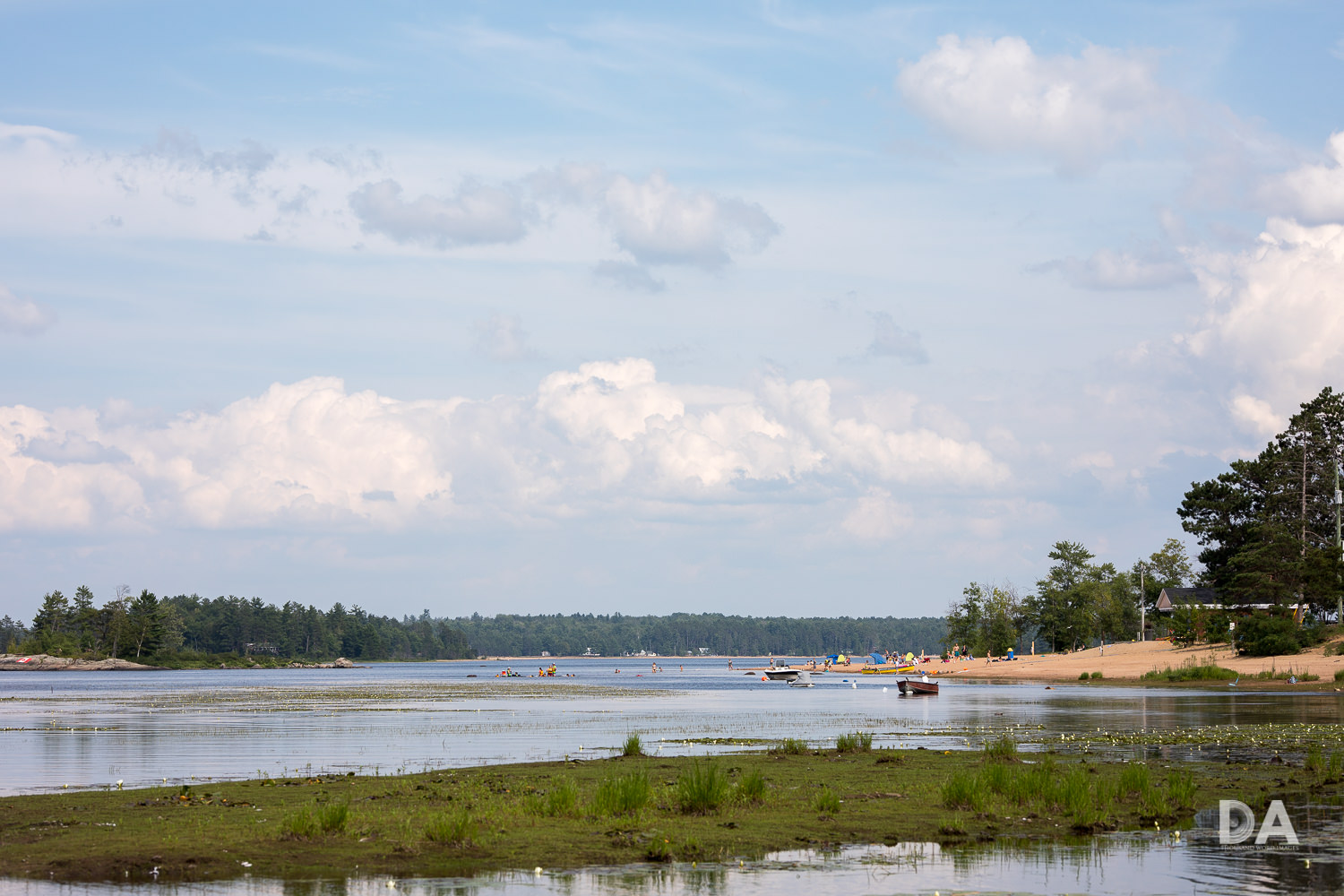







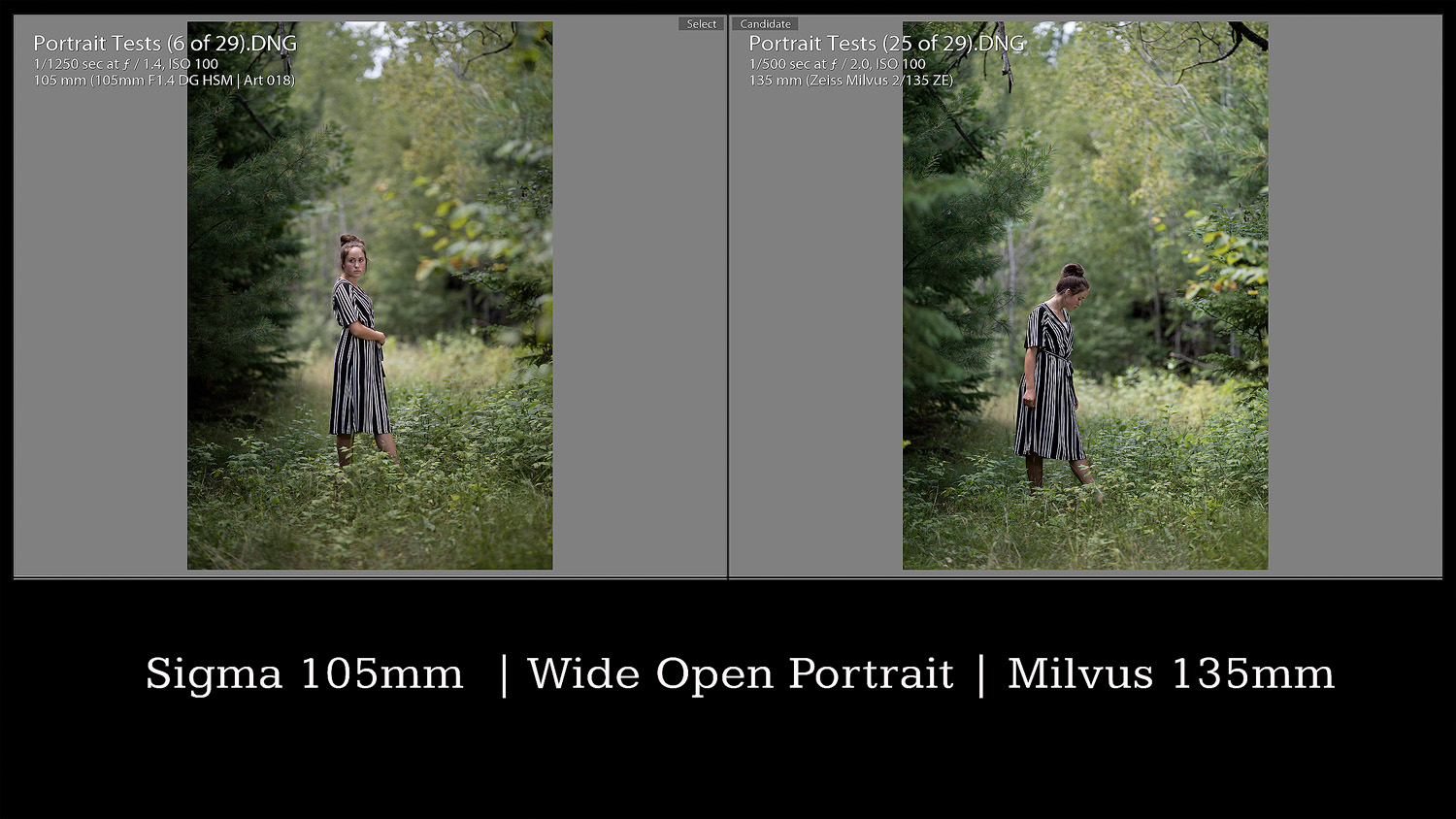





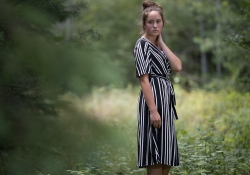












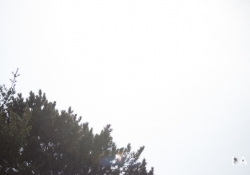
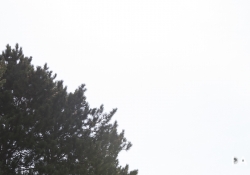













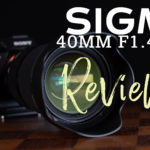
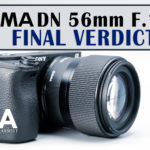

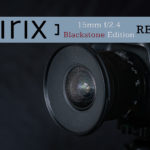
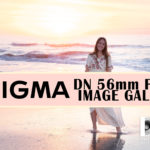
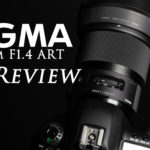
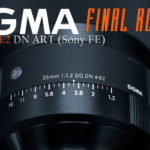
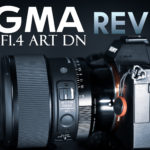
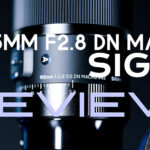
[…] 2018-09-03:Dustin Abbottがレビューを掲載しています。 […]